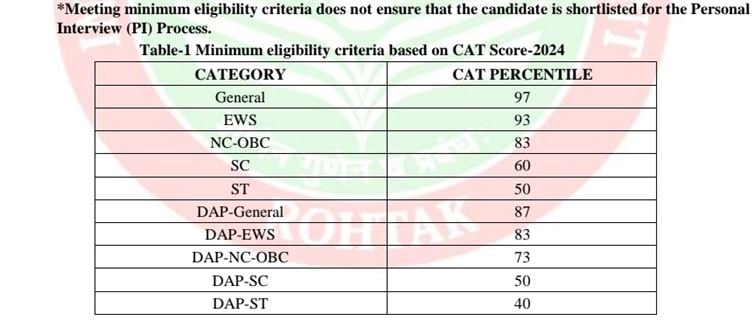
India’s caste-based reservation system was designed as a tool for social justice, to uplift historically oppressed communities like SCs and STs. But in modern-day competitive exams, the gap between cut-offs for different categories has grown so wide that many are now questioning if the system is truly uplifting the poor or simply killing merit. Here’s why the debate around IIM rohtak admissions is sparking outrage:
1. The Shocking Cut-Off Gap
At IIM Rohtak, a General category student needs 97 percentile to even qualify.
An ST student can enter with just 50 percentile, while a DAP-ST candidate (Disabled + ST) can qualify with only a 40th percentile.
This means someone scoring less than half the marks of a general student could still make it to the same classroom.
2. Poor General vs. Rich Reserved — Who Wins?
Imagine a poor General category student scoring 95 percentile struggling to afford coaching and fees.
On the other hand, a wealthy st candidate scoring just 41 percentile sails through thanks to reservation.
The result? Wealthy but low-scoring candidates replace poor yet hardworking toppers — completely defeating the purpose of “upliftment.”
3. Is This Social Welfare or Social Injustice?
The original goal of the reservation was justice for the historically marginalized.
But when caste quotas allow affluent students from reserved categories to enter elite institutions at extremely low percentiles, the policy looks more like privilege than protection.
Instead of closing gaps, it risks creating resentment and widening divides between communities.
4. The Call for Economic-Based Reservation
Critics argue that economic background, not caste, should be the deciding factor for affirmative action.
After all, a poor General student faces as many (if not more) disadvantages as a wealthy st student.
Shifting to EWS-based (Economic Weaker Section) quotas across the board would ensure that only the truly disadvantaged benefit, regardless of caste.
5. The Bigger Question: Merit vs. Social Justice
How long can a system sustain where 97%ile performers are rejected while 40%ile candidates are rewarded?
Supporters of reform argue india needs a balanced model that values both merit and genuine need.
Without change, india risks losing talent and creating a generation disillusioned with the idea of fairness.
Bottom Line
Reservation for SC/ST communities was once a necessary corrective measure against deep-rooted caste discrimination. But when it starts to favor wealthy candidates with low scores over poor meritorious students, the system is no longer serving its purpose. It’s time india rethinks reservations on economic lines — so that upliftment reaches the needy, not the privileged.




 click and follow Indiaherald WhatsApp channel
click and follow Indiaherald WhatsApp channel